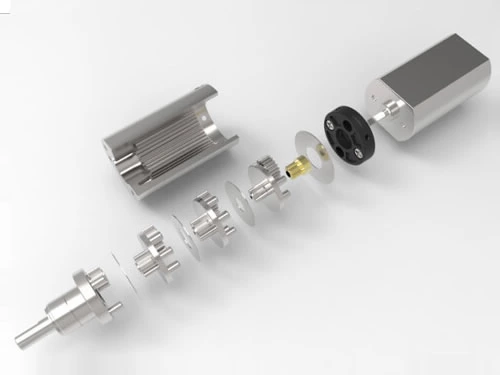What Is A Stepper Gear Motor?
The geared stepper motor is a widely used deceleration device, the 12V geared stepper motor being the most common. This article will introduce stepper motors, reducers, stepper gear motor, and their structures in detail. The stepper motor is a sensor motor. Its working principle is to use electronic circuit to convert direct current into a multi-phase sequential control current. With this current, the stepper motor can work normally. The driver is a multi-phase sequential controller, which provides time-sharing power supply for the stepper motor.
The stepper motor is an open-loop control motor that converts electrical pulse signals into angular displacement or linear displacement. It is the main executive element, and the most widely used, in modern digital program control systems. Under non-overload conditions, the motor speed and stop position depend on the frequency and pulse number of the pulse signal, and are not affected by load changes. After the stepper driver receives the pulse signal, it drives the stepper motor to rotate at a fixed angle, called a "step angle", and its rotation gradually moves at a fixed angle.
The reducer is an independent component comprising of the gear transmission, worm transmission, and gear-worm transmission, enclosed in a rigid shell. It is often used as a reduction transmission device between the original moving parts and the working machinery. It matches the speed and torque transmission between the prime mover and the working machine or actuator. It is widely used in modern machinery, and generally used for low-speed and high-torque transmission equipment. The motor, internal combustion engine, or other high-speed running power is used to achieve deceleration by meshing the large gear on the output shaft through a gear with a lower number of teeth on the input shaft of the reducer. There will also be several pairs of gears with the same principle to achieve the desired deceleration effect. The ratio of the number of teeth of the large and small gears is the transmission ratio. The drive source of the reducer can be a DC motor, a stepper motor, a coreless motor, or a micro motor. This type of deceleration equipment is also known as a DC gear motor, stepper gear motor, coreless gear motor, or a micro gear motor.
The geared stepper motor is composed of a reducer (gearbox) and a motor. The motor can provide a considerably high speed, but the torque is low, generating quite a high movement inertia. The reducer is meant to reduce speed. Increasing torque and reducing the movement inertia has reached the required speed and torque.
In short, a stepper motor can be controlled with a fixed length and speed. The difference between a stepper motor and a geared stepper motor is that the stepper motor can achieve constant speed and punctuality (you can set its duration and rotational speed). The speed of the geared stepper motor, however, is determined by the reduction ratio, and cannot be adjusted, and is high-speed. The stepper motor has low torque while the stepper gear motor has high torque.
















